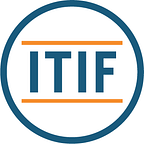Seeing is Believing: FOODVICA’s Innovative Non-Surgical Cataract Treatment #Innovate4Health
This post is one of a series in the #Innovate4Health policy research initiative. #Innovate4Health is a joint research project by the University of Akron IP Center (UAIP), the Information Technology & Innovation Foundation (ITIF), and the Geneva Network. This project highlights how intellectual-property-driven innovation can address global health challenges. If you have questions, comments, or a suggestion for a story we should highlight, we’d love to hear from you. Please contact UAIP Research Fellow Douglas Park at dpark@uakron.edu for more information.
Kristen Thompson
Imagine trying to see the outside world through a frosted window. That’s what life is like for millions of people with cataracts, one of the leading causes of preventable blindness worldwide. While cataract surgery is highly effective, the procedure itself is not always readily available. To address this issue, Mexican company Foodvica has developed a new way to treat cataracts with medication, as a cutting-edge, non-invasive option.
In Mexico, inadequate surgical and healthcare resources impose significant challenges in treating cataracts. Research suggests that a substantial portion of ophthalmologists do not have the resources necessary to perform cataract surgery. Despite having approximately 5,000 ophthalmologists, Mexico struggles to address the healthcare needs of the population, with one million individuals lacking access to essential surgical procedures.
This is particularly concerning for Mexico’s rapidly aging population, who are experiencing an increasing incidence of cataracts with advancing age. Projections indicate that by 2020 nearly 20% of the population, or approximately 23 million individuals, will be over the age of 50. Risk of cataract formation also includes factors such as obesity and diabetes, and Mexico has one of the highest diabetes and obesity rates in the world.
In addition, a 2015 ManattJones study revealed that cost is the primary barrier to cataract surgery in Mexico, with the operation inaccessible to 40% of patients. Mexico spends a good deal less of its GDP on health care than the average among other countries, leaving patients to pay almost half of their health care costs out of their own pockets. Frequently long waiting lists for surgery further stall cataract surgery.
To address these challenges, Labcymo, a division of Mexican company Foodvica, has developed a non-surgical, nanotechnology-based treatment for cataracts. Their formulation promises an affordable and accessible solution for patients at all stages of cataract development, potentially transforming the landscape of cataract care worldwide.
Previous attempts to develop non-surgical cataract treatments have shown little promise, requiring regular application of several large doses of medication. By contrast, Labcymo’s novel combination of known therapeutic compounds have demonstrated significant potential in treating certain types of cataracts with relatively few and small doses.
Labcymo’s treatment also makes use of smaller particles of the active ingredient, allowing greater absorption and distribution in a patient’s eye. Given that the treatment works by applying bioactive compounds to break down and decrease the buildup of proteins that cloud the eyes, Labcymo’s greater permeation increases the overall effectiveness of the treatment.
While Labcymo plans to offer its treatment for cataract patients around the world in the near future, it is still in the early stages of testing. Gaining regulatory approval for new medical treatments typically requires clinical trials that can take many years and hundreds of thousands or even millions of U.S. dollars.
It is not easy to attract this much investment for testing, however. Labcymo has decided to develop its cataract treatment for veterinary use first, not only to show how effective the medication is but also to secure funding for the considerably more expensive clinical trials needed for human use. Testing and other development costs for veterinary use are routinely only a fraction of those for human use.
Regardless of whether testing a pharmaceutical for human use or veterinary use, however, companies would not be able to afford to invest in the intensive testing needed for regulatory approval without the protection of intellectual property rights. Patents in particular provide inventors such as Labcymo with the rights to keep others from making, using, or selling their inventions.
Without patent rights, by contrast, competitors might copy not only others’ inventions but their investments in developing those inventions. Patents are therefore vital in protecting investments in inventive new technologies, such as testing new treatments in order to grain regulatory approval to market them.
Labcymo’s commitment to developing it cataract medication is evident in its patent applications not only in Mexico but also in other countries. Labcymo has filed applications through the Patent Cooperation Treaty (PCT), under which innovators can seek patent protections in multiple countries through a coordinated process.
In this way, Labcymo can more easily bring its cataract medication to patients in many different countries without fear of losing the hard work, time, and money that it has put into its innovative treatment. In turn, these essential protections will enable Labcymo to continue developing their groundbreaking work into a new and more readily accessible non-surgical alternative for those who otherwise might not be able to receive treatment for their cataracts.
